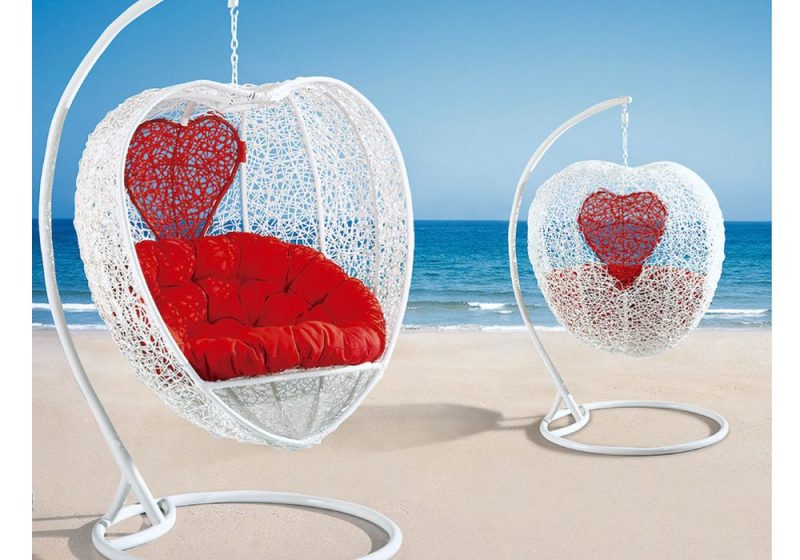Materials and Construction: Heart Shaped Back Chair

The heart-shaped back chair, a testament to both artistry and functionality, boasts a diverse range of materials and construction techniques, each contributing to the chair’s unique character and aesthetic appeal. Understanding the interplay between materials and construction methods is crucial for appreciating the intricacies of this iconic design.
Materials Used in Construction, Heart shaped back chair
The choice of materials for a heart-shaped back chair significantly influences its overall appearance, durability, and cost. Here’s a closer look at the common materials used:
- Wood: The most traditional and widely used material for heart-shaped back chairs. Popular wood choices include oak, cherry, walnut, mahogany, and maple, each offering distinct grain patterns, durability, and color variations. Wood’s natural beauty and warm tones contribute to the chair’s timeless elegance.
- Metal: Metal, particularly wrought iron and steel, provides a sturdy and durable construction. Metal chairs often feature intricate designs, intricate scrollwork, and delicate curves, creating a striking contrast between the material’s strength and the chair’s graceful form.
- Upholstery: Upholstered heart-shaped back chairs often combine wood or metal frames with plush fabrics, such as velvet, leather, or linen. Upholstery adds comfort, warmth, and a touch of luxury to the design.
Construction Techniques
The creation of the heart-shaped back requires specialized construction techniques to achieve the distinctive form. These techniques vary depending on the chosen material:
- Woodworking: Wood is often shaped using traditional woodworking techniques, including carving, bending, and joinery. Carving allows for intricate details, bending creates the curved lines of the heart shape, and joinery ensures a strong and durable structure.
- Metalworking: Metal chairs often employ techniques like forging, bending, and welding to create the heart shape. Forging allows for the creation of intricate designs and curves, while bending shapes the metal into the desired form, and welding joins the various pieces together.
- Upholstery Techniques: Upholstery involves covering the frame with fabric, padding, and springs. The process includes cutting, sewing, and attaching the fabric to the frame, ensuring a comfortable and aesthetically pleasing finish.
Advantages and Disadvantages of Different Materials and Construction Methods
The choice of materials and construction techniques has a direct impact on the chair’s overall design, functionality, and durability. Here’s a table summarizing the advantages and disadvantages of various materials and construction methods:
| Material/Technique | Advantages | Disadvantages |
|---|---|---|
| Wood | Natural beauty, warmth, durability, versatility | Susceptible to scratches and moisture damage, can be expensive |
| Metal | Durable, strong, intricate designs, easy to maintain | Can be heavy, cold to the touch, may rust |
| Upholstery | Comfort, warmth, variety of fabrics and colors, hides imperfections | Requires regular cleaning, can be prone to wear and tear |
| Woodworking | Detailed designs, strong and durable, timeless elegance | Labor-intensive, requires skilled craftsmanship |
| Metalworking | Intricate designs, durable, versatile | Can be expensive, requires specialized equipment |
| Upholstery Techniques | Comfort, aesthetic appeal, hides imperfections | Requires specialized skills, can be time-consuming |
Designing a Heart-Shaped Back Chair Using a Specific Material and Construction Technique
Let’s design a heart-shaped back chair using oak wood and traditional woodworking techniques. The chair will feature a simple yet elegant design, with a curved heart-shaped back, gently sloping arms, and a comfortable seat. The oak wood will be stained with a warm honey color, highlighting its natural grain patterns. The construction will involve hand-cut pieces of oak, joined together using mortise and tenon joinery, a technique known for its strength and durability. The heart-shaped back will be carved from a single piece of oak, showcasing the craftsmanship and artistry involved in the design.
Heart shaped back chair – Heart-shaped back chairs are super cute, but if you’re looking for something a bit more modern and sleek, check out the wave back oak chair. It’s got this cool, minimalist vibe that’s totally on-trend. Plus, the oak wood gives it a natural, earthy feel that’s perfect for any space.
If you’re all about that minimalist aesthetic, the wave back oak chair might just be your new favorite piece of furniture!
A heart-shaped back chair? That’s a vibe! But for serious sitting, you need real support. Check out back support for office chair ireland to find the perfect fit for your office chair. Then you can rock that heart-shaped chair for a quick photo op, but when it’s time to get work done, switch to a chair that keeps you comfortable and focused.